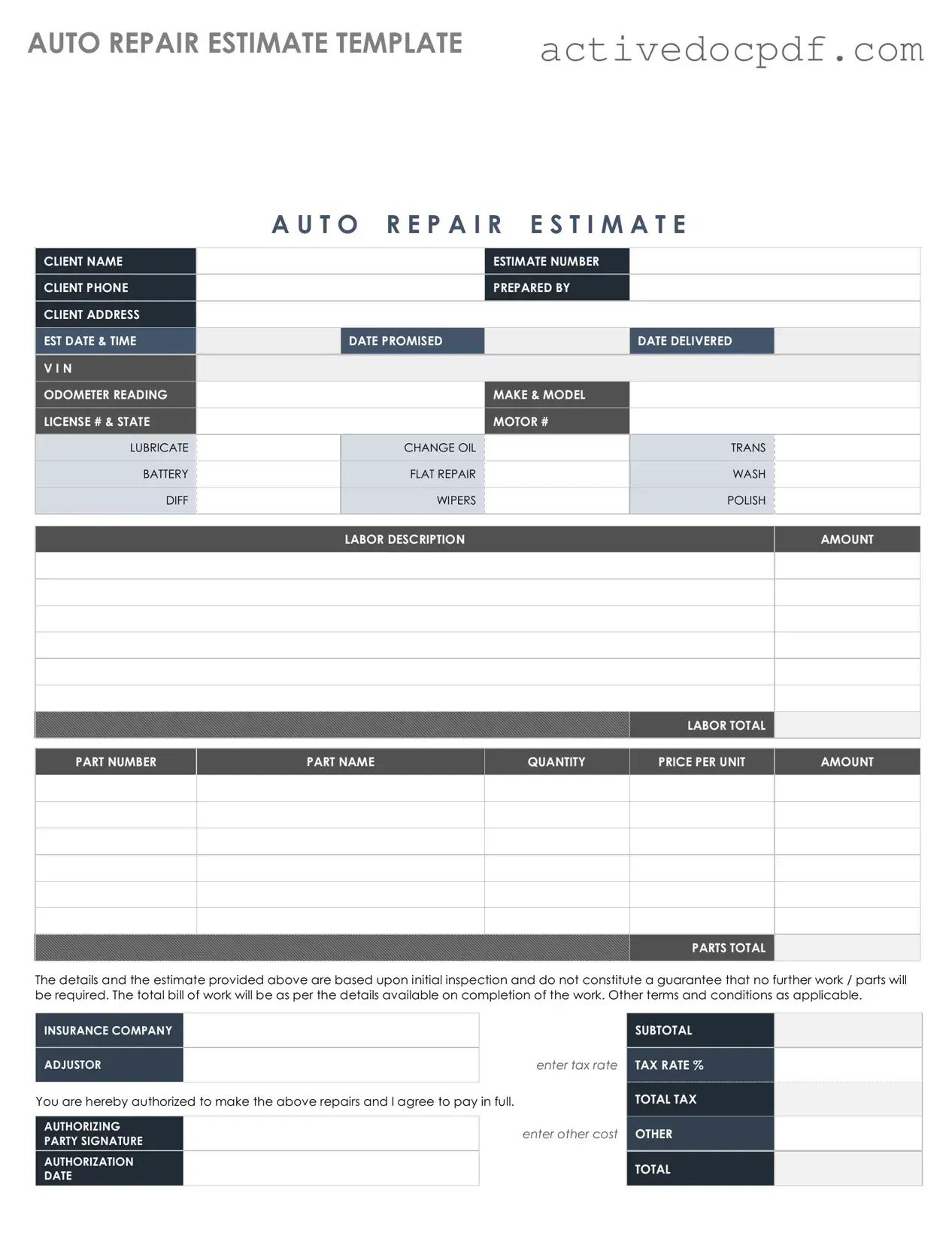An Auto Repair Estimate form is a document that outlines the anticipated costs associated with repairing a vehicle. It provides a detailed breakdown of parts, labor, and any additional fees that may be incurred during the repair process. This form helps vehicle owners understand the financial implications of the necessary repairs before any work begins.
Why do I need an Auto Repair Estimate?
Having an Auto Repair Estimate is essential for several reasons:
-
It allows you to budget for the repair costs.
-
You can compare estimates from different repair shops to ensure you’re getting a fair price.
-
It serves as a reference point for discussions with your mechanic regarding the repairs needed.
-
The estimate can help you make informed decisions about whether to proceed with the repairs.
How is the estimate calculated?
The estimate is calculated based on various factors, including:
-
The cost of replacement parts.
-
The hourly labor rate charged by the repair shop.
-
The estimated time required to complete the repairs.
-
Any additional fees, such as diagnostic charges or disposal fees.
Mechanics typically assess the vehicle’s condition and determine what repairs are necessary before providing the estimate.
Can I get an estimate without bringing my car in?
In some cases, yes. Many repair shops offer preliminary estimates based on a description of the issue over the phone or through an online form. However, for the most accurate estimate, it is often best to bring your vehicle in for a thorough inspection.
Is the estimate a binding contract?
No, the estimate is not a binding contract. It is simply an approximation of costs. Once the repairs begin, the final price may vary based on unforeseen issues or additional repairs that may be necessary. It’s important to communicate with your mechanic about any changes to the original estimate.
What if I receive a higher estimate from another shop?
If you receive a higher estimate from another shop, it’s a good idea to discuss it with your mechanic. You can ask for clarification on the differences in pricing. Additionally, you might want to consider getting a third estimate to ensure you are making the best decision for your vehicle.
How long is an estimate valid?
Estimates typically have a validity period, which can vary by shop. Most estimates are valid for a few days to a couple of weeks. After this period, prices for parts and labor may change, affecting the estimate. Always confirm with the repair shop about the validity of your estimate.
When requesting an estimate, you should provide:
-
A description of the vehicle's symptoms or issues.
-
The make, model, and year of your vehicle.
-
Your contact information for follow-up.
-
Any previous repair history related to the current issue, if applicable.
Providing detailed information helps the mechanic give you a more accurate estimate.
Can I approve repairs that exceed the estimate?
Yes, you can approve repairs that exceed the estimate. It’s common for additional issues to arise once repairs begin. Your mechanic should contact you for approval before proceeding with any work that goes beyond the initial estimate. Open communication is key to ensuring you are informed and in control of the repair process.
What should I do if I have questions about my estimate?
If you have questions about your estimate, don’t hesitate to reach out to the repair shop. They should be willing to explain the details, clarify any uncertainties, and provide additional information. Understanding your estimate is crucial for making informed decisions about your vehicle repairs.
